Winter camping brings a lot of challenges and your gear needs to meet these challenges. Forgetting something could, at best, mean a shortened trip. At worst, hypothermia and frostbite. This winter camping gear checklist contains the essentials you need to camp safely and comfortably in snowy, wintery conditions as well as some gear recommendations.
New to winter camping? Read this winter camping guide.
Note that this list is only for WINTER camping gear. I did NOT include items you might need to bring camping in all seasons (such as a bear bag, toilet paper, food, first aid kit or GPS. You can see 3-season camping gear checklist here.
Winter Sleep Setup
- 4-season tent and footprint: In mild winter weather, you can get by using a 3-season tent. However, if heavy snowfall or winds are expected, you’ll need a more durable 4-season tent.
- Stakes or snow anchors: If staking the tent into the ground, the stakes need to be made of a tough material (like these by Vargo) so they won’t bend when driving into frozen ground. Alternatively, bring lightweight poly bags which can be filled with snow/rocks to anchor the tent. Read: How to Stake a Tent in Any Condition
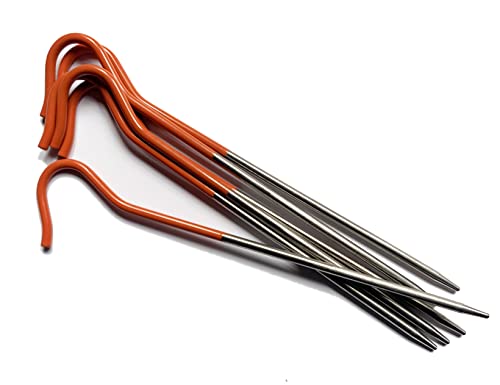
These titanium Vargo stakes can drive into frozen ground.
- Winter sleeping bag: It should be rated at least 5 degrees F lower than the temperatures you expect to encounter. Remember to check the comfort rating and not the low rating which is often listed by manufacturers.
- TWO sleeping pads: For winter camping, use a closed cell foam sleeping pad with a self-inflating pad on top of it. Ideally the closed-cell foam has a reflective side for bouncing body heat back towards your body. The combined R-value should be at least 5. An R-value of 5 is even better, especially if you aren’t clearing the snow under your tent (you could sink into the snow and cause your ten to collapse!).
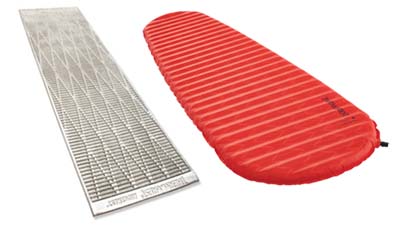
Combine a closed-cell foam pad with an inflatable pad for warmth when camping in winter, such as the Therm-a-Rest RidgeRest SOLite and . This silver pad helps reflect heat upwards.
- Brush/towel for condensation: Ice crystals may form on the inside of your tent. Use the brush to wipe them away before they melt and drench you. Or carry a spare small towel for wiping away condensation. You still need to vent your tent.
- Tent heater: This is optional but will make sleeping much more pleasant. Tent heaters range from wood stoves to propane heaters to small candle lantern heaters for backpacking.
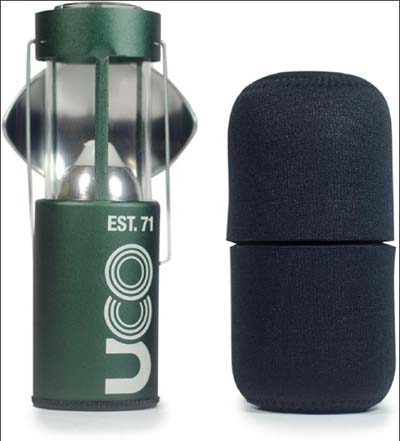
The produces a surprising amount of heat from just candles
General Winter Camp Gear
- Dry bags or plastic bags: Bring more of these than you normal would camping. Your gear can easily get wet in winter and you’ll need the bags to keep it separate from the dry gear.
- Headlamp/lantern: Remember it gets dark early in winter! You’ll want lots of light to keep the nights from getting boring and depressing.
- Spare batteries: Batteries drain faster in cold temperatures, so you’ll need to bring spares. Ideally, use lithium batteries like these because they withstand cold well. If you must use rechargeables, opt for the Enloop NiMH LSD batteries (withstand cold temperatures better than other NiMH batteries).
- Insulated seat: You don’t want to sit on the cold ground as it will suck the heat out of your body. Instead, bring an insulated foam pad for sitting on. If you are bringing a camping chair, put the pad on the chair to prevent heat loss from below. =
- Watch: You must pay attention to how many hours of daylight are left.
Snow and Ice Gear
Some of this winter camping gear might not be necessary, depending on the nature of your trip. If you aren’t sure, it’s better to play it safe than sorry.
- Shovel: This is one of the most important pieces of gear for winter camping in snow. You will need it for various tasks including packing down snow before pitching the tent, digging a scat hole, digging up snow to melt for water, creating a wind break, and much more. The Voile Telepro Avalanche Shovel is highly recommended.
- Trekking poles with snow baskets
- Sled for carrying gear
- Snow shoes or skis
- Campons or microspikes
- Ice axe
- Avalanche transceiver
- Avalanche pole
- Snow saw
- Slope meter
Clothing and Worn Gear
- Lots of spares: Bring spare mittens, hats and scarfs. If possible, bring spares of all other worn gear too!
- Vapor barrier liner (VBL): This is worn over your base layer to keep your insulating layers from getting wet from sweat. Many people wear latex gloves as VBLs for their hands or use plastic bags for VBLs for their feet. Just note VBLs will make your skin clammy and more prone to blistering, so VBLs should be removed once you stop sweating (stop doing strenuous activity).
- Sunglasses or goggles: The wind can be vicious in winter, so goggles may be necessary. They should have UV protection or bring sunglasses since the sun reflecting off snow can cause snow blindness.
Hands and Feet
Also read: How to Keep Feet Warm and Hands Warm Hiking in Winter
- Liner socks: This is what wicks moisture away from your feet. Ideally bring at least two pairs per day and change them regularly so your feet stay dry.
- Insulating socks: These should be wool or another thick material which insulates when wet.
- Winter boots: Your boots are the shell layer for your feet. They should be waterproof and insulated. Check the temperature rating on the boots!
- Gaiters: You need these even if your boots are waterproof. Snow gets on boots and melts, causing them to get wet.
- Down booties or moccasins: These are worn in the tent or sleeping bag. Your feet will be happy to get out of your boots after a long day! Also read: Best Winter Camp Booties
- Liner gloves: Like with liner socks, ideally bring at least two liner gloves per day. Swap out as your hands get wet.
- Insulating gloves/mitts: These will be made out of fleece or wool and are worn over your liner glove.
- Shell mitts: These are windproof and waterproof and worn over the insulating gloves/mitts. Many shells have built-in insulating layers so you don’t have to put on two separate layers. See these insulated shell mitts.
- Mitt clips or idiot strings: It’s very easy to lose mittens when you take them off for camp tasks. Clip them to your jacket!
- Boot bag: It’s smart to sleep with your boots so they don’t freeze at night. Put them in a waterproof bag so they don’t get your sleeping bag wet and dirty.
Safety and Navigation
- Hand warmers: Don’t skimp on these. They could save your fingers and toes from frostbite.
- Emergency food: Like energy gels or chocolate for combating hypothermia
- Sunscreen: The reflection of sun on snow can be intense. Don’t forget the sunscreen just because it’s winter!
- Balm or Vaseline: Use this to coat all exposed skin. Otherwise it will get damaged from wind and cold.
- Communication device: Like the SPOT finder. Read about emergency communication devices.
- Duct tape: Or other way of repairing gear such as tents, sleeping bags, and poles. These are more likely to occur in winter so don’t forget this.
Food, Hydration, and Cooking
- Winter water bottle: Do not bring a non-insulated metal bottle since the lid will freeze shut. Insulated thermoses or durable plastic bottles are better. It will need to have a wide mouth so you can drink without taking your mittens off. See these best winter hiking water bottles.
- Bottle insulator: If your bottle isn’t insulated, you’ll want to insulate it so the water doesn’t freeze.
- Large pot: The pot should be larger than you normally would bring camping since you will be using it to melt snow.
- White gas stove and fuel: White gas does better in cold temperatures than propane. Bring 2-3x the amount of fuel you’d normally bring for a warm-weather trip, especially if melting snow for water.
- Wind screen for stove: You are already going to burn through a lot of fuel on a winter camping trip to heat snow or water for hot drinks. The wind screen is necessary to help conserve fuel, especially since it gets so damn windy in winter.
- Hot drinks and mug
- Winter-friendly water treatment method: Note that many water filters are destroyed if frozen. Purification tablets work slow in cold weather, so UV purification might be best. See the SteriPen review here.
- Rubber gloves for refueling: Liquid fuels can cause frostbite instantly on contact in sub-freezing temperatures. Wear rubber gloves if you will need to refuel!
Other Items
- Pack-out bag: You must pack out your toilet paper in winter or burn it. Ideally you should pack out your poo too. If not, bury it deep and off the trail.
- Pee bottle: So you don’t have to get out of the tent to pee at night. Ladies – bring a urination device like the Go Girl so you can easily pee into the bottle.
- Morale items: It gets dark early in winter. Bring something to lift the mood, like a deck of cards or a book to read.
Image credit: https://www.flickr.com/photos/frankyr/7626177634/, (CC BY-NC 2.0) by Richard Cassan


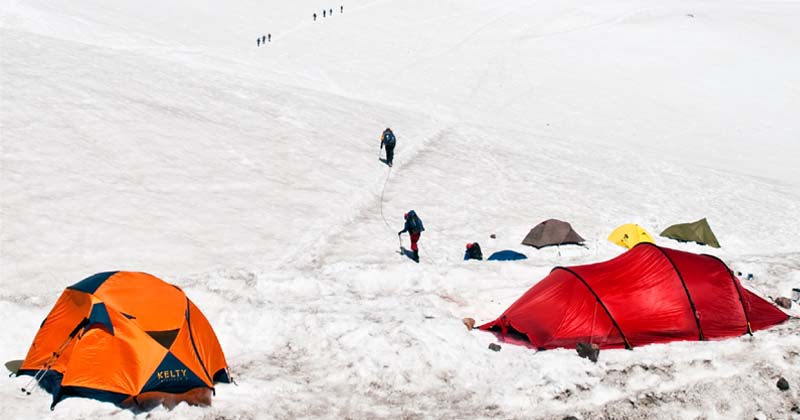
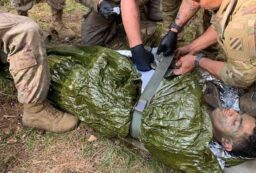
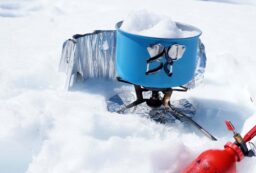








Post your comments